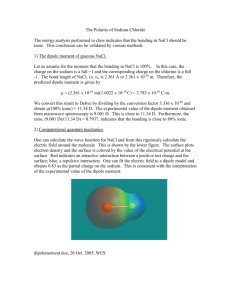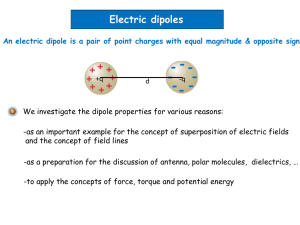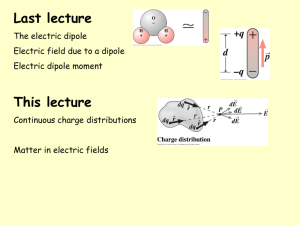ph504-1213-test1a
advertisement
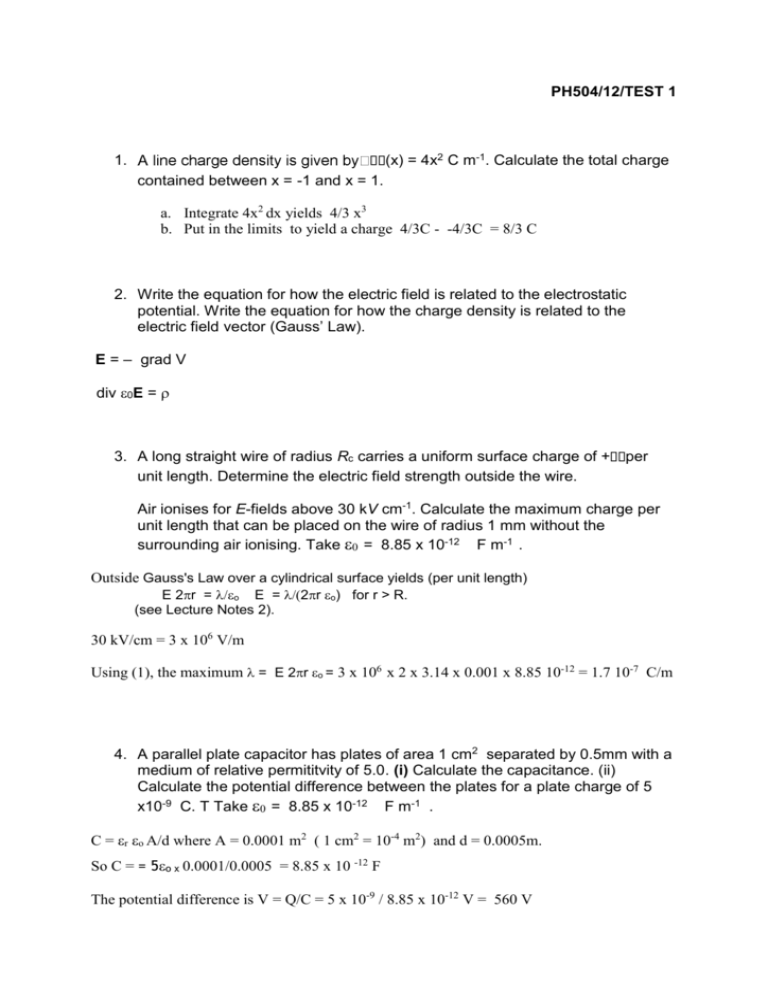
PH504/12/TEST 1 (x) = 4x2 C m-1. Calculate the total charge 1. contained between x = -1 and x = 1. a. Integrate 4x2 dx yields 4/3 x3 b. Put in the limits to yield a charge 4/3C - -4/3C = 8/3 C 2. Write the equation for how the electric field is related to the electrostatic potential. Write the equation for how the charge density is related to the electric field vector (Gauss’ Law). E = – grad V div 0E = 3. A long straight wire of radius Rc carries a uniform surface charge of + unit length. Determine the electric field strength outside the wire. per Air ionises for E-fields above 30 kV cm-1. Calculate the maximum charge per unit length that can be placed on the wire of radius 1 mm without the surrounding air ionising. Take= 8.85 x 10-12 F m-1 . Outside Gauss's Law over a cylindrical surface yields (per unit length) E 2r = o E = 2ro) for r > R. (see Lecture Notes 2). 30 kV/cm = 3 x 106 V/m Using (1), the maximum = E 2ro = 3 x 106 x 2 x 3.14 x 0.001 x 8.85 10-12 = 1.7 10-7 C/m 4. A parallel plate capacitor has plates of area 1 cm2 separated by 0.5mm with a medium of relative permititvity of 5.0. (i) Calculate the capacitance. (ii) Calculate the potential difference between the plates for a plate charge of 5 x10-9 C. T Take= 8.85 x 10-12 F m-1 . C = r o A/d where A = 0.0001 m2 ( 1 cm2 = 10-4 m2) and d = 0.0005m. So C = = 5o x 0.0001/0.0005 = 8.85 x 10 -12 F The potential difference is V = Q/C = 5 x 10-9 / 8.85 x 10-12 V = 560 V 2 5. An electric dipole consists of charges +5 x 10 -19 C and -5 x 10 -19 C separated by 0.20 nm. Calculate the electric dipole moment. The dipole is placed in an electric field of uniform strength 2.0 x 106 N/C. Calculate the magnitude of the torque on the dipole when the dipole moment is (a) parallel to, (b) perpendicular to, and (c) antiparallel to the electric field. The magnitude of the dipole moment of the electric dipole will be given as p = qs where q= 5 x 10 -19 C and s = 0.2 nm. The vector direction is from the negative to the positive. So p = 10 -28 C m. Torque = E P sin(theta), where 'theta' is the angle between the two vectors. a) in parallel position theta = 0 , so that torque = zero b) in perpendicular position theta= 90 degree and sin(90) = 1 ,so that, torque = EP sin 90 = 2x106 x10 -28 = 2 x10 -22 N m c) in antiparallel position theta = 180 and as sin180 = zero , the torque will also be zero.

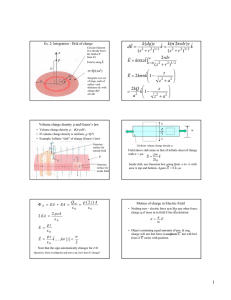

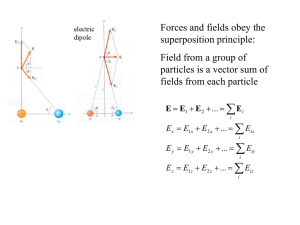
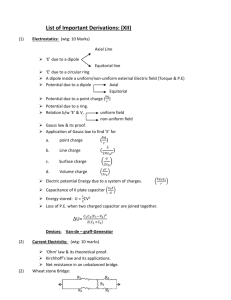
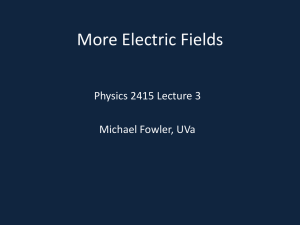
![[Answer Sheet] Theoretical Question 2](http://s3.studylib.net/store/data/007403021_1-89bc836a6d5cab10e5fd6b236172420d-300x300.png)


